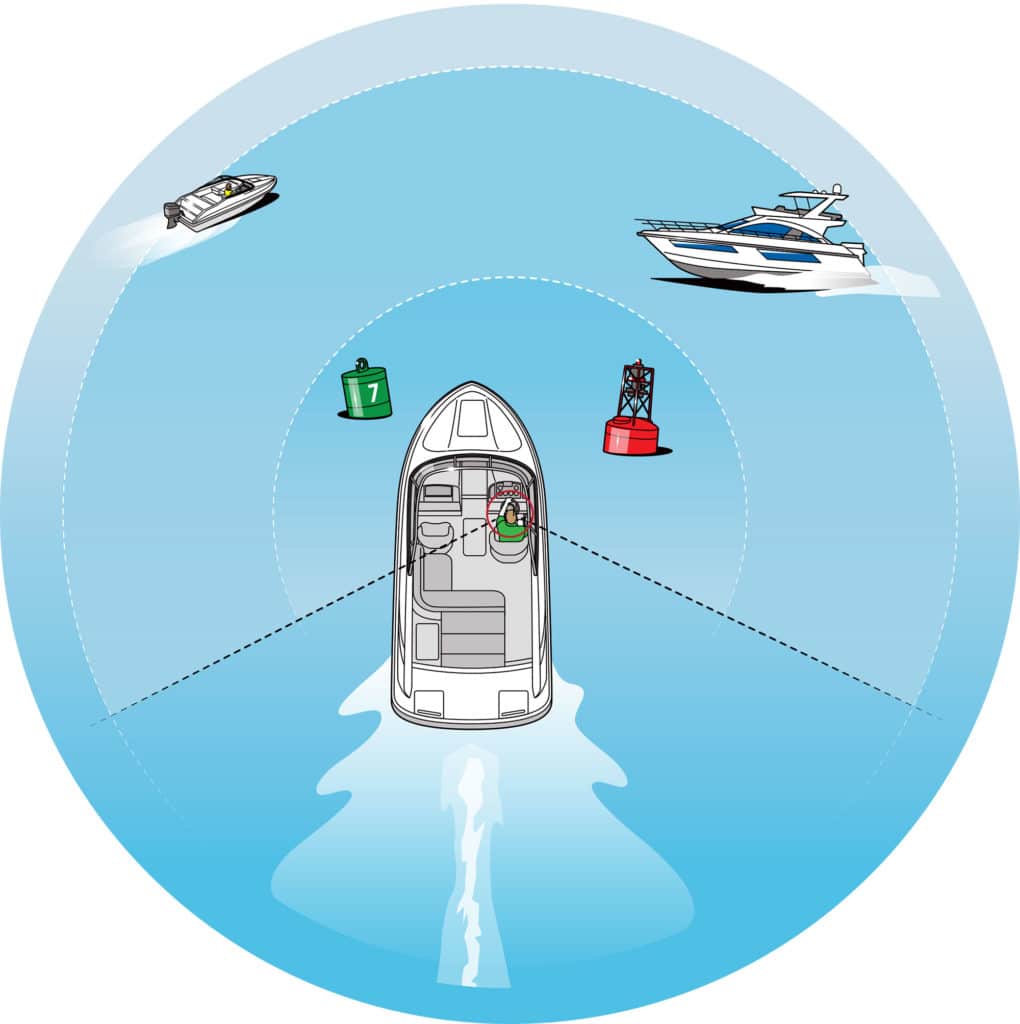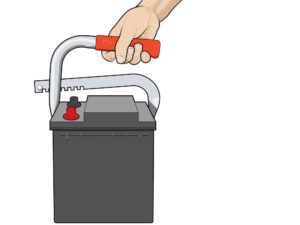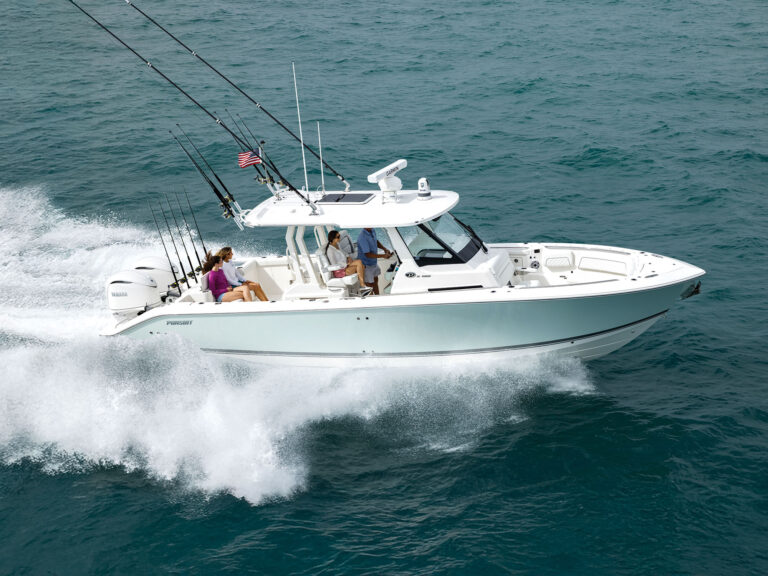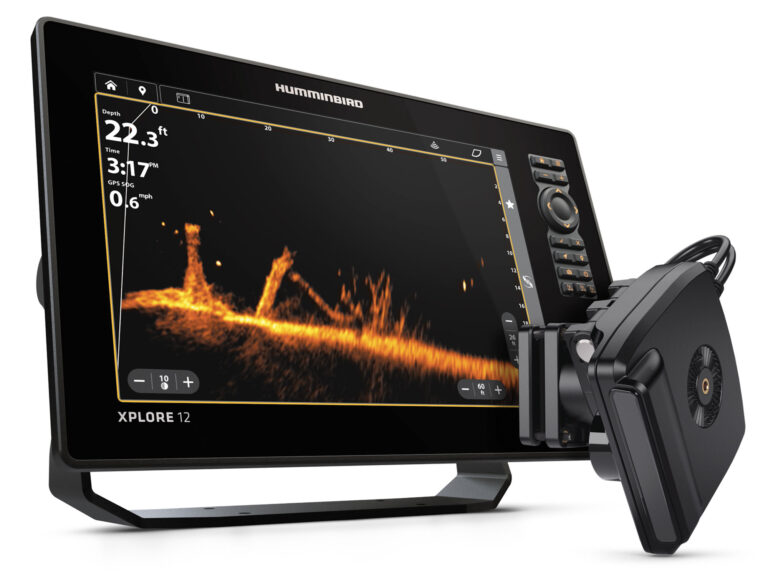
Watch experienced skippers handle their boats around a dock, and you’ll be impressed with the feel they have for the way their vessels move. So, how do beginning boaters develop that kind of boat sense? The National Safe Boating Council has developed on-the-water courses to answer that need. We just completed an instructor training course and came away impressed with four “feel” elements of the NSBC’s offerings, plus a related one that’s always useful. You can practice them yourself too, but start slowly in protected, open water.
Boater’s Eye
Are you aware of your surroundings and the way your boat is moving in relation to them? How can you tell when your boat is stationary? Situational awareness is important. Pick a nearby fixed object, such as a dock or a channel marker, and sight quickly along a line to the background behind it. The position of the fixed object in relation to the background tells you at a glance how you are moving. If the boat is stationary, the marker and the object behind it (a tree, for example) form a sightline called a range. Make developing this boater’s eye a habit out on the water.
Taking Marks
The related skill involves using your boater’s eye in concert with two geometric axioms. Remember: Two points determine a line, and two lines determine a point. When you want to mark a spot, such as a fishing reef, look for objects that make up two ranges that intersect over your reef. Write them down in a notebook. Old-timers on my home waters of the Chesapeake call this “taking marks.” Even in the age of touchscreen GPS, it’s a useful skill.
S.C.A.N.
A proven situational awareness tool, the acronym stands for scan, concentrate, analyze and negotiate. When underway at any speed, scan 240 degrees around your boat, beginning just aft of amidships on your starboard-side. Look as you rotate your eyes and head all the way forward and around to just aft on your port side. Then scan back to starboard and repeat. Focus close in while moving slowly, and farther out when moving faster. Concentrate: Are there other boats around? How many and how fast are they moving? Where are you in relation to the shoreline and channel markers? Analyze: Do you see them leaving any wakes that you’ll have to cross? Are any of them on courses that might intersect with yours? Do any objects block your way? Are course changes coming up? Negotiate: Maneuver appropriately by steering and adjusting speed according to what you see around you.
Ferrying In Wind and Current
A boat “vectors,” or reacts, to two forces acting on it from different directions, such as wind or current and propeller thrust. For example, if the wind is coming toward you at a 45-degree angle, your boat will slide sideways as it moves forward. Paddlers in canoes and kayaks know this effect as ferrying, and use it to avoid turning sideways and capsizing when crossing a strong current. Skilled powerboaters ferry to slide neatly into a dock. The place to experiment with ferrying is in open water. Once you get it working, you’ll feel like it’s magic, and people watching will too.
Tip: The reason to begin S.C.A.N. to starboard is because the Rules of the Road make us responsible for altering course to avoid any vessel approaching from starboard.
Patience
Learn the way your boat responds to low-speed turns by observing how long it takes to “answer” your turn of the helm, and how to use a quick thrust from your engine to maneuver in different directions, in forward and reverse. Remember, there are no brakes. Practice patience and practice using as little throttle and helm as possible to maneuver the boat. A wise skipper once taught me, “Dock slowly, as if you have no reverse.” Once you learn how your boat reacts in open water, try putting it in a slip or alongside a fuel dock. You’ll soon dock like a pro.
Training Courses
These organizations provide on-water training and instruction.
National Safe Boating Council
BoatU.S. Foundation
U.S. Power Squadrons “America’s Boating Club”
U.S. Powerboating
Freedom Boat Club









